Choosing Flooring That Adds Depth to Small Spaces
You know that small space in your house, the one that always seems like a problem? You aren’t sure what furniture to buy – what you have has never worked. You’ve painted in light, then switched to dark. Now it comes time to replace the flooring – how can you add depth? What flooring works for small spaces? How can you ensure you won’t have buyer’s remorse the moment it’s installed?
We hear you. Creating depth in a small space can be transformative, allowing a room to feel larger, brighter, and more inviting. The right flooring can be your secret weapon to achieving this, as the color, pattern, and layout of your floors have a big impact on how open and spacious a room feels.
Ready for a little advice?
Go Light to Make Spaces Feel Airy and Open
One of the simplest ways to make a small room feel more spacious is to choose lighter flooring colors. Light tones, such as whites, creams, light grays, and pale wood finishes, reflect more natural light, which can make a room feel open and airy.
It works because lighter colors create a visual continuity that can blur the boundaries of the room, tricking the eye into perceiving more space. By reflecting more light, light-colored floors reduce shadows that might otherwise make a room feel cramped.
Want to take advantage of this? Consider light oak, maple, or ash if you’re drawn to wood, or go for light-toned luxury vinyl plank or light ceramic tiles for other options.
For spaces with minimal natural light, lighter flooring choices can make a big difference in brightening up the room and giving it a more open feel.
Opt for Wide Planks or Large Format Tiles
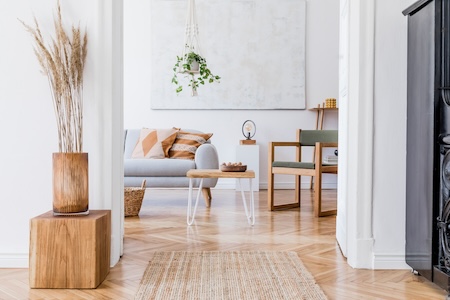 The size of your flooring planks or tiles can play a big role in how a room feels. Choosing wide planks or large-format tiles can help create a sense of expansiveness in small rooms, as they minimize the number of lines and grout joints on the floor.
The size of your flooring planks or tiles can play a big role in how a room feels. Choosing wide planks or large-format tiles can help create a sense of expansiveness in small rooms, as they minimize the number of lines and grout joints on the floor.
That’s because fewer seams and a larger surface area help reduce visual clutter, creating a seamless, continuous look. This gives the impression of a larger floor space, which is particularly beneficial in compact rooms.
Wide-plank wood or luxury vinyl plank with widths of at least 5 inches work well, as do large-format tiles that are at least 12×24 inches or larger.
Choosing wide planks or large tiles also lends a contemporary feel to the space, enhancing the design with a sleek, clean look.
Choose Consistent Flooring for a Cohesive Flow
For homes with open-concept layouts or adjoining small rooms, choosing a consistent flooring material throughout can make a big difference in creating depth. When the same flooring continues from one room to another, it eliminates visual barriers, giving the impression of one larger, cohesive space.
Consistent flooring creates an unbroken flow between spaces, helping to reduce the “boxed-in” feeling that can make small rooms feel even smaller. It’s an especially useful technique for narrow hallways, small living rooms, or compact kitchens.
Ideal Choices: Hardwood, luxury vinyl plank, or tile in a single color can provide the continuity needed. Opt for neutral tones or subtle patterns to create a versatile foundation that works well in multiple rooms.
Continuing the flooring into adjoining spaces visually expands your layout, adding depth and making each area feel connected and open.
Embrace Diagonal or Herringbone Patterns for a Visual Stretch
For those looking to add a bit of character to their space, consider laying flooring in a diagonal or herringbone pattern. Both of these layouts are fantastic for creating visual interest and giving the illusion of added width or depth.
Patterns like diagonal or herringbone draw the eye along the lines, which can make the room appear larger than it actually is. These patterns add a dynamic element that naturally expands the room’s perceived dimensions. It truly looks great inside a home.
Hardwood, luxury vinyl plank, or even large tiles can be laid in diagonal or herringbone styles. Choosing a medium to light tone enhances the effect, adding elegance without overwhelming the space.
Installing flooring in one of these patterns can be a beautiful way to bring both style and depth to a smaller room, creating an upscale and distinctive look.
Keep Grout Lines Thin and Color-Matched
For tiled floors, grout lines can either enhance or detract from the room’s spacious feel. Wide grout lines in contrasting colors can make a floor feel busy and segmented, which can shrink the room visually. Instead, opt for thinner grout lines in a color that matches the tile.
Matching grout to the tile color creates a more unified look, reducing the visual breaks that can make a floor feel cluttered. Thin grout lines also make tiles appear larger, adding to the sense of continuity.
Porcelain or ceramic tiles in light, neutral colors work well with matching grout. If your tiles have a subtle pattern, matching the grout color keeps the floor looking seamless and expansive.
Add Depth with High-Gloss or Reflective Finishes
Reflective flooring finishes can work wonders in small spaces. A high-gloss finish on wood, vinyl, or tile floors reflects more light, which can create a mirror-like effect that visually expands the space.
Reflective surfaces increase the amount of light bouncing around the room, making it feel larger and brighter. This technique is especially effective in rooms with limited natural light, as the gloss can amplify artificial lighting as well.
High-gloss wood or luxury vinyl plank, as well as polished porcelain tiles, offer reflective properties that enhance depth. Choose light or neutral shades to maximize the brightening effect.
Be mindful of where you use high-gloss finishes, as they can show more scratches in high-traffic areas. However, in small spaces, these finishes can be a beautiful addition that adds depth and elegance.
Use Area Rugs Strategically for Texture and Warmth
If you want to add texture and warmth without sacrificing depth, consider using area rugs strategically to complement your flooring. Choose rugs that match the tones of your flooring or add a subtle contrast to enhance the sense of space.
Area rugs provide a layered look, which can add dimension to a small room without disrupting the visual flow. Choose larger rugs that cover most of the floor for a cohesive look, rather than smaller ones that can segment the space.
Neutral or light-colored rugs in simple patterns are ideal, as they add softness without overwhelming the room. In spaces with wood or tile floors, a soft-textured rug can also provide a cozy contrast. Strategically placed area rugs help define areas within a room, adding visual interest and making small spaces feel more expansive.
Incorporate Vertical Lines or “Lengthening” Patterns
If you’re looking to make a room feel longer or taller, consider adding flooring with vertical lines or lengthening patterns. Linear patterns can stretch the eye across the room, making it feel more open and spacious.
Vertical lines or patterns guide the eye along the length of the room, giving it a sense of greater depth. This technique is especially useful in narrow spaces or areas with lower ceilings.
Wood planks, luxury vinyl plank, or tiles arranged in straight lines or elongated patterns work well. If you’re using laminate or vinyl planks, lay them lengthwise in the room for a visual stretch.
Select Flooring with Subtle Patterns
In small spaces, less is often more. Flooring with subtle patterns—like light wood grains, marble veining, or soft stone textures—can add a touch of depth without overwhelming the room.
Subtle patterns add visual interest while maintaining a cohesive, expansive look. Bold patterns can dominate a small space, while understated designs keep things balanced and sophisticated.
Light oak or maple with a soft grain, or porcelain tiles with gentle veining, can add texture without overpowering the room. Using flooring with a subtle pattern gives you the best of both worlds: the depth and interest of a design element with the spacious feel that small rooms need.
Final Thoughts: Creating Depth with the Right Flooring Choices
Choosing the right flooring for a small space is all about maximizing light, color, and continuity to create a sense of openness and depth.
Ready to choose flooring that brings depth and style to your small space? Visit our showroom, where we’ll guide you through the best options to create a cohesive, expansive look.
Let’s transform your small rooms into spaces that feel bright, open, and designed to impress!
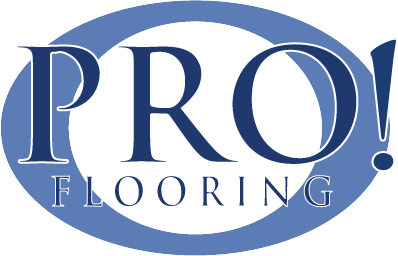
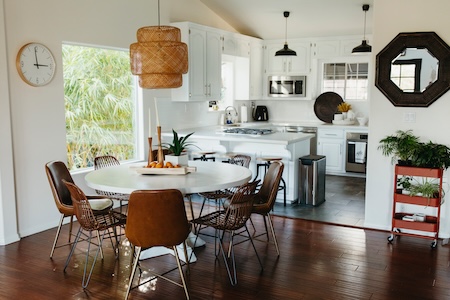 When it comes to adding warmth, carpet is one of the top choices. Carpet provides natural insulation, helping to keep spaces warmer in the winter and reducing the need for excessive heating.
When it comes to adding warmth, carpet is one of the top choices. Carpet provides natural insulation, helping to keep spaces warmer in the winter and reducing the need for excessive heating.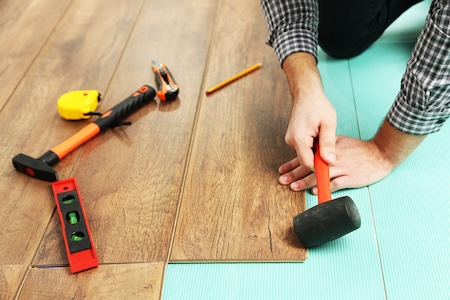 Without proper leveling, floors can develop creaks and squeaks as they flex under pressure. For materials like hardwood, an uneven subfloor can cause planks to pull away or warp as they try to adjust to the irregular surface.
Without proper leveling, floors can develop creaks and squeaks as they flex under pressure. For materials like hardwood, an uneven subfloor can cause planks to pull away or warp as they try to adjust to the irregular surface.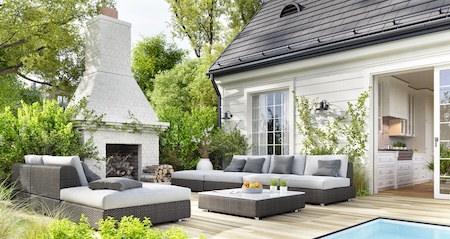 Before we dive into flooring types, let’s talk about why choosing the right floor is so important for indoor/outdoor spaces. The floor sets the tone for the entire area, providing both style and function. You’re combining your living spaces to take advantage of Colorado’s weather. You want indoor floors to blend outdoors. That means floors need to be able to withstand the elements while remaining comfortable, safe, and easy to maintain.
Before we dive into flooring types, let’s talk about why choosing the right floor is so important for indoor/outdoor spaces. The floor sets the tone for the entire area, providing both style and function. You’re combining your living spaces to take advantage of Colorado’s weather. You want indoor floors to blend outdoors. That means floors need to be able to withstand the elements while remaining comfortable, safe, and easy to maintain.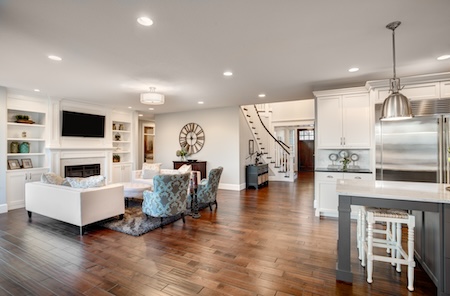 Not sure if LVP is right for you? Then we suggest porcelain tile. Porcelain tile is another versatile, cost-effective option that can replicate the appearance of high-end materials like marble, travertine, or even wood. Porcelain is durable, water-resistant, and comes in a range of styles that can add elegance to any room.
Not sure if LVP is right for you? Then we suggest porcelain tile. Porcelain tile is another versatile, cost-effective option that can replicate the appearance of high-end materials like marble, travertine, or even wood. Porcelain is durable, water-resistant, and comes in a range of styles that can add elegance to any room.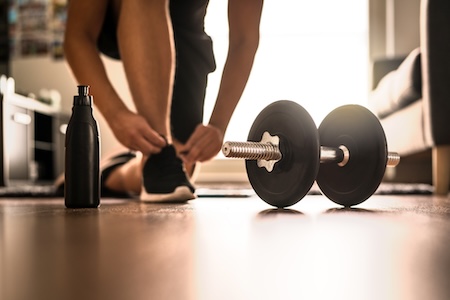 Luxury vinyl plank (LVP) has quickly become a favorite for homeowners looking for a combination of durability, style, and affordability. It’s a fantastic choice for high-energy rooms because it can withstand a lot of foot traffic and still look great.
Luxury vinyl plank (LVP) has quickly become a favorite for homeowners looking for a combination of durability, style, and affordability. It’s a fantastic choice for high-energy rooms because it can withstand a lot of foot traffic and still look great.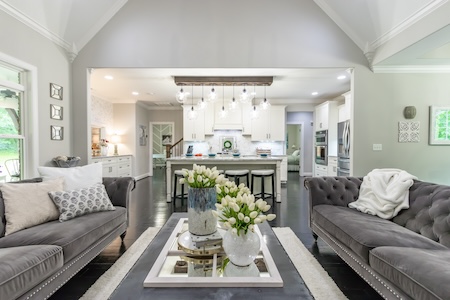 We’ve all been there—rearranging furniture can be a hassle. In a pinch, it’s tempting to simply drag a couch or fridge across the floor. But dragging heavy items is one of the quickest ways to cause permanent damage to your floors.
We’ve all been there—rearranging furniture can be a hassle. In a pinch, it’s tempting to simply drag a couch or fridge across the floor. But dragging heavy items is one of the quickest ways to cause permanent damage to your floors.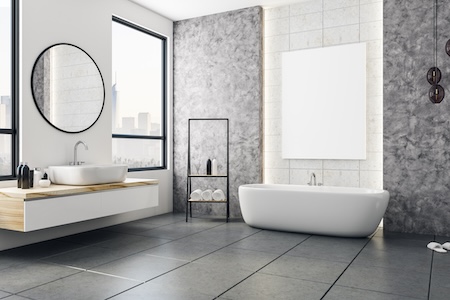 Think about the areas of your home that are exposed to water on a regular basis: the bathroom after a steamy shower, the laundry room after washing a load of clothes, or even a basement prone to dampness. Over time, moisture can seep into your flooring, and that leads to:
Think about the areas of your home that are exposed to water on a regular basis: the bathroom after a steamy shower, the laundry room after washing a load of clothes, or even a basement prone to dampness. Over time, moisture can seep into your flooring, and that leads to: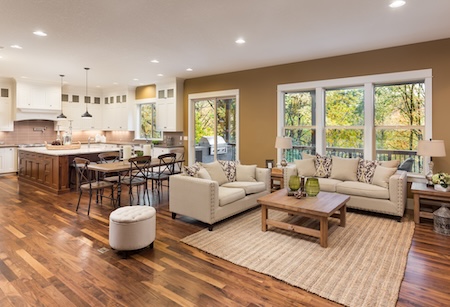 The right hardwood floor can set your home apart in a competitive market. You’re ready to go. You have your eye on upgrading to hardwood flooring. What factors should you consider to maximize resale value?
The right hardwood floor can set your home apart in a competitive market. You’re ready to go. You have your eye on upgrading to hardwood flooring. What factors should you consider to maximize resale value?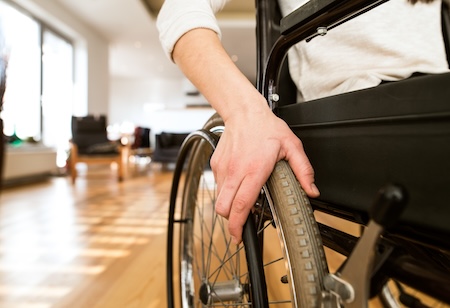 Luxury vinyl flooring is quickly becoming a go-to option for homes prioritizing wheelchair accessibility. It’s stylish and affordable. It also boasts incredible durability and ease of maintenance.
Luxury vinyl flooring is quickly becoming a go-to option for homes prioritizing wheelchair accessibility. It’s stylish and affordable. It also boasts incredible durability and ease of maintenance.